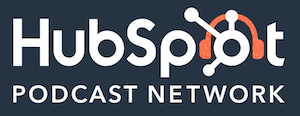How To Improve Your Local Marketing Strategy written by John Jantsch read more at Duct Tape Marketing
Marketing Podcast with Laura Nelson
 In this episode of the Duct Tape Marketing Podcast, I interview Laura Nelson. Laura has marketed, sold to, and collaborated with local businesses for over 10 years of her career as a marketer and business manager. She is currently VP of Marketing at Signpost, following roles with Broadly, Reputation.com, and Patch. Laura earned an MBA from the University of Michigan and a BFA at Carnegie Mellon University.
In this episode of the Duct Tape Marketing Podcast, I interview Laura Nelson. Laura has marketed, sold to, and collaborated with local businesses for over 10 years of her career as a marketer and business manager. She is currently VP of Marketing at Signpost, following roles with Broadly, Reputation.com, and Patch. Laura earned an MBA from the University of Michigan and a BFA at Carnegie Mellon University.
![]()
![]()
Key Takeaway:
Marketing has changed for all types of businesses in the last few years thanks to new platforms, channels, and technology. But for small businesses — the changes have been revolutionary, often leveling the playing field and providing a way to reach their customers and new audiences in a low-cost, targeted, and personalized way. In this episode, I talk with the VP of Marketing at Signpost, Laura Nelson, about the latest trends in local marketing and what strategies to focus on.
Questions I ask Laura Nelson:
- [1:17] So what did you work on in your fine arts and what do you do with it now in your life?
- [2:07] Let’s talk about the local versus national differences in marketing — are there any significant differences let’s say for a plumber versus say a software company when it comes to digital marketing?
- [3:57] Does a business with 10 locations need to be optimized for all 10 locations?
- [5:40] For a lot of businesses, the Google profile presence is one of the most important aspects of the business — what do you have to do to show up there?
- [8:52] Consumer behavior has changed dramatically — how have referrals changed the game for local businesses?
- [12:27] How do we get those reviews from customers that seem to be happy?
- [15:16] How do you manage all of the various channels available today like online, live chat, SMS, appointment scheduling, etc.?
- [18:02] What are some industries that you think are ahead of the curve in having automated and integrated communication?
- [20:25] What benefits can Duct Tape listeners redeem from Signposts?
More About Laura Nelson:
- Signpost.com
More About The Certification Intensive Training:
- Learn more about the Certification Intensive Training here
Like this show? Click on over and give us a review on iTunes, please!
John Jantsch (00:00): This episode of the Duct Tape Marketing Podcast is brought to you by Outbound Squad, formerly Blissful Prospecting, hosted by Jason Bay. It’s brought to you by the HubSpot Podcast Network, the audio destination for business professionals. Jason Bay is a leading sales expert, and he talks with other leading sales experts to get you the information you need. I’ve recent episode, he talked about how much time you need to spend prospecting. Really, really eye-opening. Check it out. Uh, listen to the outbound squad, wherever you get your podcasts. Hello and welcome to another episode of the Duct Tape Marketing Podcast. This is John Jantsch, and my guest today is Laura Nelson. She’s marketed, sold to and collaborated with local businesses for over 10 years of her career as a marketer and business manager. She’s currently the vice president of Marketing at Signpost, following roles with broadly reputation.com and Patch. Sharon, an MBA from the University of Michigan and a BFA at Carnegie Mellon University. So, Laura, welcome to the show.
Laura Nelson (01:13): Hi, Jen. Thanks for having me.
John Jantsch (01:16): So what did you work on in your, uh, fine arts?
Laura Nelson (01:18): I was a painting, drawing, um, printmaking specialists. So mostly two, two dimensional works. However, through the program, we had to learn how to use every medium from the traditional media to uh, com computer based video. Yeah. Everything in between.
John Jantsch (01:39): So, so what, what do you do with that now in life?
Laura Nelson (01:42): I do
John Jantsch (01:43): Still paint for,
Laura Nelson (01:44): Yeah,
John Jantsch (02:01): As I picked up the man, I picked up the mandolin. Oh, there you go.
Laura Nelson (02:31): Yeah, absolutely. Um, a plumber primarily is trying to attract homeowners, you know, to his or her business, right.
John Jantsch (02:40): Um, in their community.
Laura Nelson (02:43): So like, you know, they are restricted by geography. They have a certain budget in mind. Often there are trade-offs when they’re budgeting for marketing versus other, you know, expenses and other staff, et cetera. Company like ours, signposts, we are a B2B or business to business company. So we sell all, all across the United States, and we sell primarily to businesses rather than to homeowners. Plumbers are our customers. Right, right, right. Along with other contractors who are looking for ways to, uh, attract homeowners with looking for ways to build their brand and their communities and ultimately grow their businesses. Right?
John Jantsch (03:29): So that local business that works in a community, obviously they, they want people generally speaking in proximity for a lot of businesses mm-hmm.
Laura Nelson (04:11): Absolutely. And, you know, we work with businesses that have one to 10 locations as just an example. That would be our sweet spot. You know, the single location is going to be solving for slightly like, different problems than someone operating a business at 10 locations. Sure. They’re thinking about scale and achieving economies of scale. Right. Depending on how they’re set up, you know, across multiple communities or multiple states, you know, they may have different, um, needs in terms of their marketing strategies, the reach and the software that they invest in. However, they, you know, the things that they have in common are the basics. Right. You mentioned showing up on Google Maps, right? Like, if your business is not optimized for that, you’re not part of the conversation, a homeowner is not going to find you and pick your business.
John Jantsch (05:05): Yeah. The, so, so let’s jump right to what makes Google Maps happen. The Google business profile for a lot of businesses is, I, I mean, we work with businesses. It’s probably the most important aspect. I mean, it’s scary because it’s owned by somebody else, but it’s, it is, it’s probably the most important aspect. And having it optimized, having the right signals, there are having lots of good reviews, but obviously showing up. I mean, that, that, that, you know, for a lot of local marketers is maybe job one. I mean, so what advice I, I know you work with business owners helping them optimize that, uh, tool. So what, you know, what advice I, I’m sure people come to you all the time say, I wanna show up in that thing,
Laura Nelson (05:47): You’re absolutely right, John. The Google business profile, also formerly known as Google My Business, is probably the most important thing you can do to establish your business’s presence online. And everyone wants to be in what we call that local prepack, right? When someone searches for plumbers in your area, or roofers, et cetera, you wanna be one of those businesses that’s in the top three that are most obvious to those homeowners looking to solve a problem. The real challenge, as you alluded to is that, you know, that is somewhat out of our control, right? Right. There are basics that we can do to invest in improving that profile. Like first claim it
(06:49): Link it to your website, link it to your scheduler, add photos of your team and the great work that you do. Make sure your phone number’s right. Yeah. I just went over to, uh, a granite countertop business over my lunch break a few minutes ago, and, you know, I told him, Hey, I’ve tried to call you for two days and your number’s not ringing through. Right? So we’ll get into what happens next in terms of a homeowner making that next step. But getting all that critical information is, you know, absolutely essential to showing up online. And of course, I, I don’t want to leave out customer reviews, right? We don’t know the perfect Google formula to, you know, what enables a business to rank in that three pack. But we do know reviews are an important part of that. So having a lot of reviews, ensuring you’ve got a consistent, um, stream of them over time is really important.
John Jantsch (07:48): Yeah. And, and, and actually I think they are giving some pretty good clues these days because if you do a local search, a lot of times what they surface will say, well, these words we’re in some of the reviews. I mean, and they’ll actually show you some of those reviews. So we obviously know that they are, that they are using those really almost like keywords in mm-hmm.
Laura Nelson (08:56): Yeah, it definitely has. And we perfectly described how homeowners have shifted their behavior, right? We’ll still have those conversations with friends and neighbors and trust what they say, but then we’re gonna go online to verify what we learned, right? So if my neighbor tells me, Hey, work with this contractor, he did a great job. I still need to go on Google to figure out how to get in touch with him, right? Yeah. Right. If I see something lower than a four and a half or four stars, I’m gonna start to question right? That recommendation, right? These are people who are coming into homes and, you know, doing an important job. And you know, if the quality of the reviews isn’t aligned with that recommendation, I’m gonna start doing my homework. I’m gonna start looking at other providers in my area. Yeah. That’s one way. I think also, you know, first and foremost people are starting that search on Google, right?
(09:58): That’s where the ma majority of people are starting. Yeah. But there’s this other class of referral that I don’t want local business owners to miss out on, and, and that’s the conversations that are happening in Facebook groups. Sure. On Nextdoor, you know, especially when it’s a tougher project. And for instance, I can refer back to the contracting project I’m working on right now. It’s a smaller job, it’s not a mansion, but I do have a renovation planned and you know, I had a hard time connecting with the contractor through traditional means, right? Like filling out contact forms and calling people. Yeah. Yeah. So I went on next door and posted, I went in face groups to post and asked people, you know, who do you recommend? And I got a lot of responses that way. Yeah. So it’s another that’s important thing to keep an eye on.
John Jantsch (10:51): Are you an agency owner, consultant or coach that works with business owners? Then I want to talk to you about adding a new revenue stream to your business that will completely change how you work with clients. For the first time ever, you can license and use the Duct Tape Marketing system and methodology in your business through an upcoming three day virtual workshop. Give us three days and you’ll walk away with a complete system that changes how you think about your agency’s growth. The Duct Tape Marketing System is a turnkey set of processes for installing a marketing system that starts with strategy and moves to long-term retainer implementation engagements. We’ve developed a system by successfully working with thousands of businesses. Now you can bring it to your agency and benefit from all the tools, templates, systems and processes we’ve developed to find out when our next workshop is being held, visit DTM world slash workshop.
(11:48): That’s DTM world slash workshop. So, so many of the home services industries right now are swamped. And I mean, getting somebody to even call you back right now,
Laura Nelson (12:48): Yeah, you’re absolutely right about, you know, these mid four star reviews are great. Yeah. Right. No business is perfect and they’ll make mistakes and you’ll see the occasional irate customer, right. That adds to the authenticity of the reviews that are there. Right? So it’s so painful and so personal, right. Especially when a business gets a, a one-star review. But the recommendation here is to bury it with positive reviews. Sure. So you asked how Right. It all comes down to putting a process in place and getting your team behind it and ensuring that you have the right tools. Yeah. So for example, I see teams all the time who, you know, wrap up a job. They have a happy homeowner right there and, you know, fail to take the extra step. Say like, you know, Hey, are you happy? And, and if so, would you mind writing a review for our business?
(13:41): You know, these matter to us. They help us find more homeowners just like you. And, you know, it’d be mean the world to us if you did. That’s one, you know, making that ask personal when you wrap up every job. And number two is actually following up, right? Yeah. Gotta make it easy for the homeowner. If they can’t find your Google listing, if they can’t find your Yelp listing, even if they have the best intentions, they’re gonna move on with their day. Right? They’re gonna go somewhere else. Like they wanted to do it, but it wasn’t easy. And, and that’s where tools like signposts can really make a difference, right? You shoot ’em a text message, you shoot ’em, an email goes right to your listing link and takes several steps out of the process and ensures that it gets done.
John Jantsch (14:28): Yeah. I, it, it’s funny that, uh, you know, QR codes are certainly having, uh, a day again, right? Um,
Laura Nelson (14:59):
John Jantsch (15:20): It’s kinda like when pod, it’s kinda like when podcast first came out, it was very hard to listen to ’em and then when Apple put the app right on the iPhone, all of a sudden podcasts took off as well.
Laura Nelson (15:30): Oh yeah. Yeah.
John Jantsch (15:31): So what about all the, one of the things I know frustrates some business owners, but I think it’s, it’s like back in the day when it’s like, do you, you have to take credit cards and checks and cash, you know, now you have to be online and in chat you have to use s m s, you have to have appointment scheduling because people are going to, people want to interact with you the way they want to interact with you. How do you manage all of those various channels?
Laura Nelson (15:56): Yeah, it’s incredibly difficult. And this is where technology and other services can make it super easy. I referenced that Granite Countertop store. Mm-hmm.
John Jantsch (16:11):
Laura Nelson (16:11): Right. So I will not always do that because I would like a path of lease resistance. Yeah, yeah. And that’s what homeowners and customers are really gravitating toward. But I send way more texts a day than make phone calls and I think that’s common across the population. So if I can get a quick answer, you know, through text message or through chat, I’m gonna do that. I’m gonna take out the friction of a phone call. But that’s like, that’s very difficult for businesses to manage if they’re using like their traditional tools. Yeah. Like, you know, the owner’s cell phone and you know, the team member’s, cell phones and you know, a chat widget with
John Jantsch (16:52): Somebody’s gonna be there. Yes.
Laura Nelson (16:54): Yeah. If it’s not integrated Yes. It becomes overwhelming. Right. Right. And you have to hire someone to manage all of that. That’s what signpost helps to make easy is to bring all of those messages into one place so you don’t have 50 tabs open of leads coming from different sources that can come into one dashboard. Yeah. Right. And you’ve got all your messages there where you can fire off quick replies or automated replies too. Yep. Which is really important. You know, if you miss a customer’s call, for example, our system can send a text and ensure that customer was heard. Right. We got your message, we’ll get back to you. And that enables you to start a text conversation Right. With
John Jantsch (17:37): Them. You, you could say while you’re waiting, here’s the 27 projects we did last week. Right? Yeah,
Laura Nelson (17:42): Exactly. You can customize that reply, you can send your scheduling link. Yeah. You can get them kind of moving down the funnel of making a decision of whether they’re going to hire you.
John Jantsch (17:52): Yeah. Yeah. It’s a great differentiator too cuz a lot of people may maybe called three people, you know, Sunday night, you know, waiting for them to all come call ’em back Monday morning and uh, all of a sudden you’ve advanced the ball a little bit by having
Laura Nelson (18:05): Exactly. And people are gonna hire the person who responds first. Simple.
John Jantsch (18:10): That’s right.
Laura Nelson (18:30): Yeah. I think, you know, in the realm that we’re talking about, say online reviews and communications technologies, in my experience I’ve seen dental and medical offices a little ahead of the curve there. That’s not to say all of them are, because, you know, the issue now that we’re seeing is that this software is pretty agitated
John Jantsch (18:59): It’s probably true of anybody who lived by appointment, you know, scheduled all day long. You know, that the, that those were probably some of the first adopters, weren’t they?
Laura Nelson (19:09): Yeah. Because like they, you know, they want to fill every slot in their day. Right. And they know if, you know, if someone cancels, didn’t get a reminder as just an example and they’re losing revenue Yeah. For that spot. And it’s very difficult for them to fill unless they’ve got a long waiting list and you know, people are available fill those slots.
John Jantsch (19:26): Can I just complain about the people that send me an email, call me n send me a text as well. They really need to, it’s like when we first got into the AI bots, you know, it’s like
Laura Nelson (19:40):
John Jantsch (20:10): Yeah.
Laura Nelson (20:11): Um, to add on to the question that you asked previously. Yeah. Signpost really concentrates on contractors though. We serve dozens and dozens of industries. We focus on contractors because we saw real need, you know, there are companies across the spectrum when it comes to tech adoption and, and marketing savviness. So we saw that, you know, there was a need, we had the best product market bit and so that’s why primarily we focus in that area.
John Jantsch (20:40): Yep. So we’ve mentioned the name signpost, it’s just signpost.com. Do you, do you wanna invite anybody for the 50% off, uh, special because they’re a duct tape
Laura Nelson (20:50): Listener? Yes, absolutely. Um,
John Jantsch (21:14): Laura St. Thanks so much for stopping by the Duct Tape Marketing podcast and hopefully we’ll uh, get to run into you one of these days out there on the road.
Laura Nelson (21:21): Thank you so much, John. Really appreciate it.
John Jantsch (21:23): Hey, and one final thing before you go. You know how I talk about marketing strategy, strategy before tactics? Well, sometimes it can be hard to understand where you stand in that, what needs to be done with regard to creating a marketing strategy. So we created a free tool for you. It’s called the Marketing Strategy Assessment. You can find it @ marketingassessment.co. check out our free marketing assessment and learn where you are with your strategy today. That’s just marketingassessment.co. I’d love to chat with you about the results that you get.
Sign up to receive email updates
Enter your name and email address below and I’ll send you periodic updates about the podcast.
This episode of the Duct Tape Marketing Podcast is brought to you by the HubSpot Podcast Network.
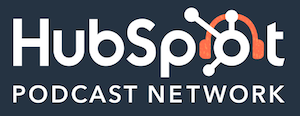
HubSpot Podcast Network is the audio destination for business professionals who seek the best education and inspiration on how to grow a business.

 In this episode of the Duct Tape Marketing Podcast, I interview Dan Franks. Dan is the Co-founder and president of Podcast Movement, the world’s largest conference and trade show for the podcast industry. He is a CPA and was formerly the Business Manager and Director of Live Events for Midroll Media.
In this episode of the Duct Tape Marketing Podcast, I interview Dan Franks. Dan is the Co-founder and president of Podcast Movement, the world’s largest conference and trade show for the podcast industry. He is a CPA and was formerly the Business Manager and Director of Live Events for Midroll Media.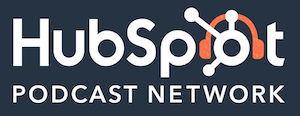
 In this episode of the Duct Tape Marketing Podcast, I’m doing a solo show. Today, we have the ability now to start businesses without really adding much overhead. You don’t need an office – all you really need is a computer. But in order to scale, there are a few things you have to get right, and we’ve created a system to do just that.
In this episode of the Duct Tape Marketing Podcast, I’m doing a solo show. Today, we have the ability now to start businesses without really adding much overhead. You don’t need an office – all you really need is a computer. But in order to scale, there are a few things you have to get right, and we’ve created a system to do just that.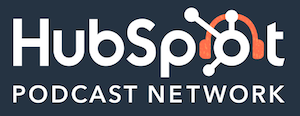
 In this episode of the Duct Tape Marketing Podcast, I interview Jenn Herman. Jenn is
In this episode of the Duct Tape Marketing Podcast, I interview Jenn Herman. Jenn is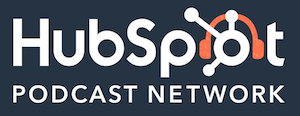
 In this episode of the Duct Tape Marketing Podcast, I interview Liz Lathan. Liz is a c
In this episode of the Duct Tape Marketing Podcast, I interview Liz Lathan. Liz is a c .
.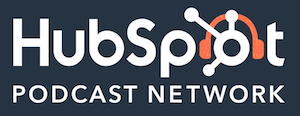
 In this episode of the Duct Tape Marketing Podcast, I interview Mindy Weinstein. Dr. Weinstein
In this episode of the Duct Tape Marketing Podcast, I interview Mindy Weinstein. Dr. Weinstein 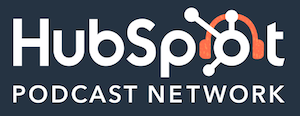
 In this episode of the Duct Tape Marketing Podcast, I interview Tom Peters. Tom is
In this episode of the Duct Tape Marketing Podcast, I interview Tom Peters. Tom is 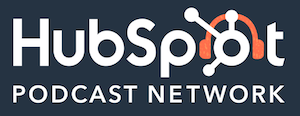
 In this episode of the Duct Tape Marketing Podcast, I interview Melanie Deziel. Melanie
In this episode of the Duct Tape Marketing Podcast, I interview Melanie Deziel. Melanie 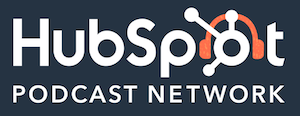
 In this episode of the Duct Tape Marketing Podcast, I interview Ann Handley. Ann is a Wall Street Journal bestselling author focused on helping businesses worldwide escape marketing mediocrity to ignite tangible results. Her work has appeared in Entrepreneur, the Wall Street Journal, NPR, Chicago Public Radio, and the Financial Times. She’s the Principal at MarketingProfs and the author of Everybody Writes: Your New and Improved Go-To Guide to Creating Ridiculously Good Content 2nd Edition.
In this episode of the Duct Tape Marketing Podcast, I interview Ann Handley. Ann is a Wall Street Journal bestselling author focused on helping businesses worldwide escape marketing mediocrity to ignite tangible results. Her work has appeared in Entrepreneur, the Wall Street Journal, NPR, Chicago Public Radio, and the Financial Times. She’s the Principal at MarketingProfs and the author of Everybody Writes: Your New and Improved Go-To Guide to Creating Ridiculously Good Content 2nd Edition.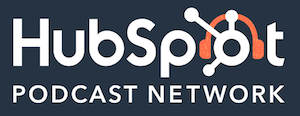
 In this episode of the Duct Tape Marketing Podcast, I interview Martha McSally. Martha
In this episode of the Duct Tape Marketing Podcast, I interview Martha McSally. Martha 